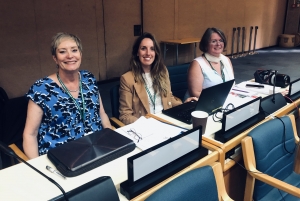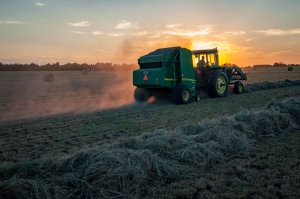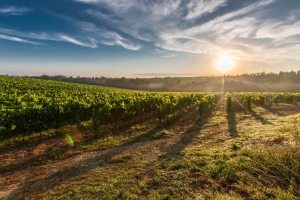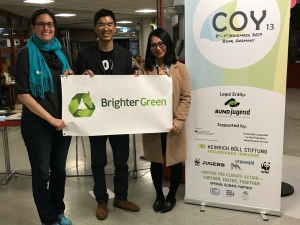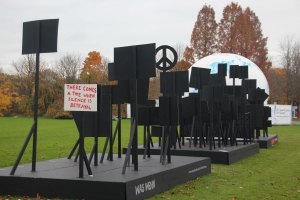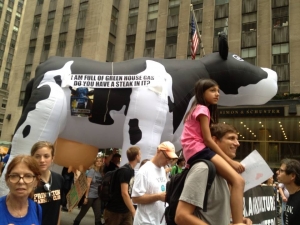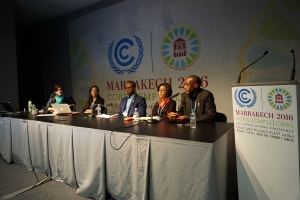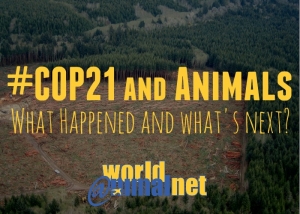Displaying items by tag: Climate Change
How many more reports do we need to face reality? We must change our food systems to save the environment, and ourselves.
Negotiations on a Post-2020 Global Biodiversity Framework - Updating the Strategic Plan of the Convention on Biological Diversity
The Science is Clear - Reducing Meat Consumption to Help Reverse the Climate Crisis
How we can feed more people with what we already have
An On-the-Ground Look at Progress Made at COP23 in Bonn, Germany
This is a guest post prepared by Caroline Wimberly of Brighter Green. She attended the UN Framework Convention on Climate Change (UNFCCC) Conference of the Parties (COP)23 in Bonn, Germany last month and reports on various civil society activities which brought attention to the link between animal agriculture and climate change. For more information on outcomes of COP23 and emerging advocacy opportunities for animal protection organizations see Janice Cox’s blog on COP23.
Climate Change: COP 23 Outcomes and an Opportunity for Animal Protection Organizations
This blog analyses reports on the outcomes of the UN Framework Convention on Climate Change (UNFCCC) Conference of the Parties (COP)23, and outlines opportunities for animal protection organizations that have emerged as a result. For more information on activities at the conference from an on-the-ground perspective, please see this guest post from Caroline Wimberly of Brighter Green, who attended the COP23 in Bonn, Germany.
One important, yet low-profile, outcome from this year’s climate change conference was the end of a deadlock on agriculture which has lasted for years.
Six Reasons Animal Advocates Should Participate in the People’s Climate March (and Why Environmentalists Should Listen to Them)
WAN participated in the 2014 People’s Climate March, where we brought a giant inflatable cow emblazoned with the words, “I’m full of greenhouse gases, do you have steak in it?” Three years later, we are proud partners of the People’s Climate March, which will take place April 29th. There will be numerous marches in the United States, but also around the world. As partners of the March, we want to take the opportunity to call on animal advocates to take part in the March.
Updates from COP22 in Marrakech, Morocco
At World Animal Net, one of our key initiatives is to help animal protection organizations around the world better understand and leverage international policy opportunities to improve the lives of animals. Unfortunately, WAN was unable to personally attend the recent Conference of the Parties to the United Nations Framework Convention on Climate Change (UNFCCC) meeting in Marrakech. However, we are pleased that our colleagues Tozie Zokufa of Humane Society International, the Pan African Animal Welfare Alliance, and member of WAN’s International Policy Forum and Caroline Wimberly of Brighter Green were kind enough to prepare reports of their experiences and work at the convention as well as outcomes and future directions for advocacy at the UNFCCC with the wider animal protection community.
COP 21 and Animals: What Happened and What’s Next?
On the weekend of December 12 and 13, 2015, something monumental happened—representatives of 195 nations adopted a climate agreement in Paris at COP 21. For the first time in history, nearly every country on the planet is committed to working to limit dangerous greenhouse emissions to combat the worst impacts of climate change. More specifically, these nations have agreed to pursue efforts to slow the increase in global temperatures to 1.5 Celcius degrees above pre-industrial levels. Among the legally binding elements of the agreement are the requirements to submit emission reduction targets and regularly review those goals.


